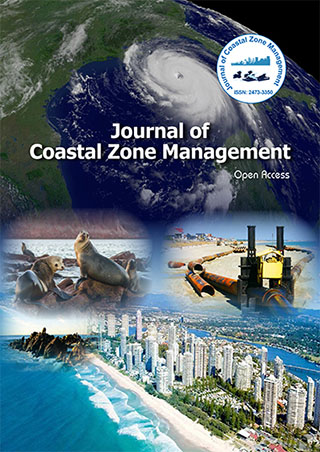Indexed In
- SafetyLit
- RefSeek
- Hamdard University
- EBSCO A-Z
- OCLC- WorldCat
- Publons
Useful Links
Share This Page
Journal Flyer

Open Access Journals
- Agri and Aquaculture
- Biochemistry
- Bioinformatics & Systems Biology
- Business & Management
- Chemistry
- Clinical Sciences
- Engineering
- Food & Nutrition
- General Science
- Genetics & Molecular Biology
- Immunology & Microbiology
- Medical Sciences
- Neuroscience & Psychology
- Nursing & Health Care
- Pharmaceutical Sciences
Improved risk, hydrodynamic and hydrocarbon spill modeling assessments in macro-tidal harbor environment
3rd International Conference on Coastal Zones and Oceanography
May 18-19, 2018 Singapore
Oleg Makarynskyy
Australian Institute of Marine Science, Australia
Keynote: J Coast Zone Manag
Abstract:
Statement of the Problem: The growing pressure of exposure to petroleum hydrocarbons in tropical areas around the world requires novel, innovative approaches for assessing risks of hydrocarbon spills. The purpose of this study was to develop a workflow connecting a risk assessment methodology to results of spill weathering and trajectory numerical modeling, and then to emerging tropical toxicological data. Methodology: Typical incidents leading to hydrocarbon spills are proved to be identified based on the analysis of risk profiles for the study area. The risk assessment process considered the probabilities and consequential impacts associated with potential risk events. The rate of hydrocarbon weathering was modeled using ADIOS2 as a function of hydrocarbon properties, sea state and surface temperature. The Delft3D integrated flow and transport modeling system validated against local observations was used for assessing hydrodynamics. Spill trajectory modeling was carried out using a purpose-developed oil spill trajectory and fates model, MEDSLIK-II. Findings: The validations suggested that Delft3D-FLOW correctly propagated the tidal variations from the open boundary through the entire model domain and accounted for variable in time and space winds. The stochastic modeling approach to spill assessments involved 100 simulation of each modeling scenario using different samples of ambient conditions each time. Three thresholds for modeling of potential entrained hydrocarbon impacts were set to 10 ppb, typical of temperate climates and 103 ppb and 64 ppb, which are EC10 for tropical coral without and with UV impacts. Conclusion & Significance: An inter-comparison of the respective spill impact probability maps demonstrated that appropriate thresholds may improve the predictive efficiency of spill impact assessments in the estuarine and open-ocean environments, leading to coherent contingency planning and response measures.
Biography :
Oleg Makarynskyy has over 25 years’ project management experience and extensive skills in the areas of met-ocean numerical modeling and data collection, processing, integration and analysis. He has led multiple research field campaigns, hydrodynamic, wastewater discharge and dredging studies and oil spill assessments including sensitivity mapping and contingency planning, toxicity and risk of releases, hydrocarbon weathering, deterministic and stochastic spill trajectory modeling. He has demonstrated throughout his career his ability to market services and to develop business with new and existing clients.
